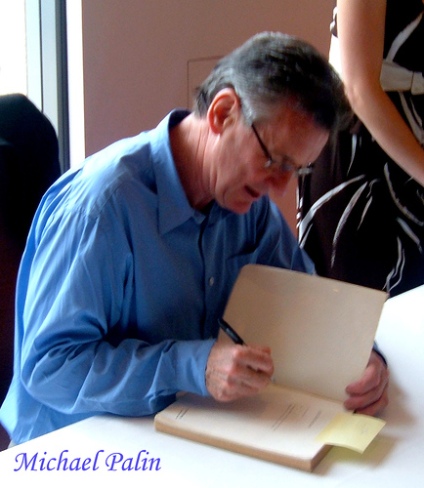A. It’s a big building with books, but that’s not important right now
(apologies to the makers of the movie “Airplane!” )
Airplane! is the property of Paramount Pictures (1980)
Ask most people what a library is and you will find that a big building with books is their standard answer.
If you ride on any commuter trains or buses you will have noticed that a lot of people have shunned the humble paper book in favour of iPads, Kindles and other glossy e-readers. Go into a bookstore, if you can find one. They are thin on the ground at the moment. Visit any high school classroom and you will probably see the students huddled over a laptop reading the soft copy version of their text book. They probably don’t even HAVE a hard copy.
Many people are wondering why, in light of the demise of the old fashioned book, we need a big building full of them. There has been much discussion in recent years about this.
Most recently there has been this in The Guardian newspaper (click on the headings to read the articles)
Libraries don’t have to be a thing of the past – just look at Melbourne’s
and this in New Edition Contemporary Publishing Magazine
Shhhh! It’s all so quiet
Both articles bemoan the closing of many libraries, and explain why a library is so much more than just a big building with books in it.
Even your typical humble city library has a wealth of different collections, from fiction and non-fiction books, to newspapers, journals and various forms of media (audiobooks, CDs, DVDs). Many of them provide access to services like Overdrive to download e-books for your e-reader and Bolinda Audio to download audio books for your mp3 player. Many also provide the public with access local history materials such as the Illawarra Index, and access to a range of databases full of scholarly material.
Anyone who thinks libraries are dead should pop into the National Library of Australia in Canberra. I recently visited this library on a Saturday afternoon. It was a hive of activity! The huge reading rooms were full of people.
There was a writer’s conference on in one of the conference rooms and the lobby was full of people enjoying a cup of tea during a break. There were many people sitting on comfy chairs enjoying the latest periodicals which are displayed near the reception desk.
Admittedly this is no ordinary library. There are approximately 10 million items in the collection. The library collects books, journals, newspapers, archives, manuscripts, pictures, photographs, musical scores, maps, websites and oral history and folklore recordings. They are also working on the digitisation of historic Australian newspapers. By June 2011, 51 million articles were freely available to the public through Trove.
The library also has a collection of realia. At one time the library was the only national collecting institution and as such maintains a collection of treasures which would now probably go to a museum. There are also items that have been owned by writers or collectors of documents. In addition, ceremonial objects linked to important people and events are sometimes collected with the documents pertaining to them. Many of these items are displayed in the Treasures Gallery. Below is an image of Sir Thomas Mitchell’s sextant that is featured in a display case outside the gallery.

I visited the National Library with my husband and youngest son. They both eagerly went to catalogs (son is pictured below) to explore what the library had to offer. My husband was incredibly impressed with how user friendly and how informative the catalog was. If he looked for a book by a particular author, the catalog gave him not only the bibliographic details you would expect, but also had links to other books by the same author, and short descriptions of the books.

The National Library really is a big building (and it does have books in it) but that’s not important right now. What is important is that it is a vital part of Australia. The library holds the greatest collection in the world of material relating to Australia and the Australian people. It is a place where anybody can come to read, to access the internet, to do research, look at maps, look at photographs, tour the gallery or even just access the databases from a house in Darwin.
And they do! More than half a million people visited the library in the financial year 2010/11. The National Library website boasts 339 million page views in the same year.
It seems to me that libraries are very relevant and are here to stay.












